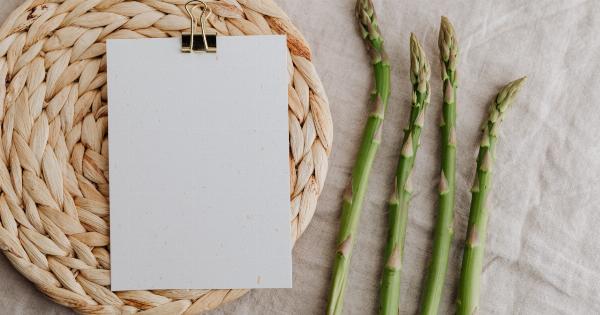With the growing popularity of vegetarian and vegan diets, it’s no surprise that more and more people are embracing a plant-based lifestyle.
Whether it’s for health, ethical, or environmental reasons, ditching meat has become an appealing choice for many individuals. However, concerns about meeting protein needs often arise when considering a vegetarian or vegan diet.
In this article, we will explore how veggies can adequately meet your protein requirements and provide you with the essential nutrients you need for a balanced diet.
The Importance of Protein
Protein is an essential macronutrient that plays a crucial role in various bodily functions.
It’s responsible for building and repairing tissues, producing enzymes and hormones, supporting immune function, and acting as a source of energy when carbohydrates and fats are insufficient. Moreover, protein is composed of amino acids, which are the building blocks of life and are necessary for the synthesis of new proteins in the body.
Daily Protein Requirements
The Recommended Dietary Allowance (RDA) for protein is 0.8 grams per kilogram of body weight for adults. However, these guidelines are set to prevent deficiencies rather than optimal health.
Depending on your activity level, age, and overall health, your protein needs may vary. Some experts believe that individuals engaged in regular physical activity or strength training may benefit from higher protein intakes.
When following a vegetarian or vegan diet, it is important to consider the source and quality of protein consumed to ensure adequate intake of essential amino acids.
Complete vs. Incomplete Proteins
Protein sources can be categorized as either complete or incomplete based on their amino acid profile. Complete proteins, also known as high-quality proteins, contain all nine essential amino acids in the required proportions.
Animal-based protein sources such as meat, poultry, fish, and dairy products are considered complete proteins.
In contrast, plant-based protein sources lack one or more essential amino acids, classifying them as incomplete proteins. However, by combining different plant protein sources, you can create complete protein profiles.
These combinations are known as complementary proteins.
Complementary Proteins for Vegans and Vegetarians
Vegetarians who consume dairy and eggs have a wider range of complete protein options available to them. However, for vegans who exclude all animal products, knowing how to combine plant-based proteins becomes crucial.
Some examples of complementary protein combinations include:.
1. Rice and beans: This classic combination provides all essential amino acids, making it a staple in many cuisines worldwide.
2. Hummus and whole-grain pita bread: Chickpeas used in hummus, combined with whole-grain pita bread, provide a complete protein source.
3. Lentils and quinoa: Both lentils and quinoa are rich in protein and together form a complete protein source.
4. Peanut butter on whole-grain bread: When combined, peanut butter and whole-grain bread offer a complete protein profile.
By being mindful of complementary protein sources, vegans and vegetarians can ensure they consume all essential amino acids necessary for optimal health.
Plant-Based Protein Sources
Fortunately, there is an abundance of plant-based protein sources available that can meet your protein needs without relying solely on meat. Here are some excellent sources of plant-based protein:.
1. Legumes: Lentils, chickpeas, black beans, and other legumes are not only rich in protein but also high in fiber, vitamins, and minerals.
2. Soy Products: Tofu, tempeh, and edamame are complete protein sources derived from soybeans, making them excellent options for vegans and vegetarians.
3. Quinoa: This ancient grain is a complete protein on its own and is also high in fiber and essential nutrients.
4. Nutritional Yeast: Nutritional yeast is a popular ingredient among vegans as it provides a cheesy flavor while being a complete source of protein.
5. Nuts and Seeds: Almonds, peanuts, chia seeds, hemp seeds, and pumpkin seeds are packed with protein, healthy fats, and other beneficial compounds.
6. Seitan: This wheat-derived protein is often used as a meat substitute due to its high protein content and meat-like texture.
Supplementation for Protein Needs
In some cases, it may be challenging to meet protein needs through diet alone, especially for individuals with specific dietary restrictions or increased protein requirements due to heavy training or certain health conditions.
In such cases, protein supplementation can be a convenient and effective option.
Plant-based protein powders such as pea protein, brown rice protein, and hemp protein are widely available and offer a convenient way to increase protein intake.
However, it’s essential to choose high-quality supplements and consult with a healthcare professional or registered dietitian to determine the appropriate dosage and ensure it fits your specific needs.
Tips for Incorporating Plant-Based Proteins
If you’re considering ditching meat and transitioning to a vegetarian or vegan diet, here are some tips to help you incorporate plant-based proteins into your meals:.
1. Experiment with new recipes: Look for creative vegetarian or vegan recipes to try, incorporating different plant-based protein sources and complementary combinations.
2. Embrace whole grains: Whole grains such as brown rice, quinoa, and whole-grain bread provide not only protein but also fiber and essential nutrients.
3. Add nuts and seeds to your meals: Sprinkle a handful of almonds or seeds on top of salads, stir-fries, or smoothie bowls for an extra protein boost.
4. Try meat alternatives: Explore plant-based meat alternatives such as veggie burgers, tofu, or tempeh as substitutes for meat in your favorite dishes.
5. Be adventurous with legumes: Experiment with different types of lentils, beans, and chickpeas to diversify your protein sources and add variety to your meals.
Maintaining a Balanced Diet
While ensuring adequate protein intake is essential, it’s crucial not to overlook other nutrients the body needs for optimal health.
When transitioning to a vegetarian or vegan diet, pay attention to incorporating a variety of fruits, vegetables, whole grains, healthy fats, and other essential vitamins and minerals. This will help you maintain a well-rounded and balanced diet.
Conclusion
Ditching meat doesn’t mean compromising your protein needs.
By strategically combining different plant-based protein sources and paying attention to your overall diet, you can easily meet your protein requirements while enjoying the benefits of a vegetarian or vegan lifestyle. Embracing a plant-based diet not only promotes personal health but also contributes to a more sustainable and compassionate world.






























